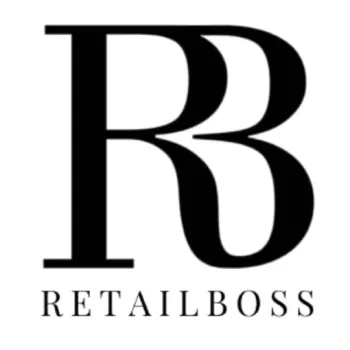What is Shrink in Retail?
Retail shrinkage is an issue that plagues businesses across the globe, causing annual losses of over $50 billion.

RETAILBOSS provides well-curated, research-driven news and insights into the trends…
Retail shrinkage is an issue that plagues businesses across the globe, causing annual losses of over $50 billion. It's a silent killer that chips away at your profits without you even realizing it. The term 'shrink' in the retail industry carries a distinct meaning. It doesn't imply a reduction in size or scale but rather signifies an unaccounted loss of inventory that isn't attributable to sales. This occurrence, commonly referred to as shrinkage, is a significant issue for retailers across the globe. According to the National Retail Federation, shrinkage has escalated into a colossal problem, with an estimated global cost of $94.5 billion.
Shrinkage is the discrepancy between the recorded inventory and the actual items in stock. When this discrepancy is high, it indicates a high shrinkage rate, which negatively impacts a retailer's bottom line. The shrinkage causes are multifaceted, ranging from shoplifting and employee theft to administrative errors and vendor fraud.
Causes of Shrinkage in Retail
Shoplifting, or 'external theft,' accounts for 37% of retail shrink. The rise in self-serve checkouts and Scan & Go services has inadvertently allowed shoplifters to mis-scan items, switch barcodes, or leave the store without paying. Human error, such as selecting the wrong item at checkout, also contributes to shrinkage.
Employee theft is another significant contributor to shrinkage. This can take various forms, from outright theft of items to more subtle forms of fraud, such as intentionally mischarging an accomplice. Administrative errors, often overlooked, are mistakes in the accounting process that cause a discrepancy between expected and actual inventory. These errors, although unintentional, can significantly impact a business's revenue and profitability.
Vendor fraud, an often overlooked organized crime, can result in considerable profit loss. This occurs when vendors collaborate with employees to infiltrate or influence processes or when fraudulent invoices are raised to deceive finance departments.
Operational or accidental loss is usually factored into a retailer’s financial plans. These losses are typically attributed to breakages, supply chain disruptions, or expired products. Shrinkage doesn't just affect the retailer's bottom line; it also impacts consumers who end up paying higher prices, employees, who may face lower wages or fewer hours, and the business owner who is placed at a competitive disadvantage.
Strategies to Prevent Retail Shrinkage
However, shrinkage is not an insurmountable problem. Retailers can employ various strategies to reduce shrinkage. These include clarifying company policies, training employees about theft prevention, reducing human error with checklists and reporting, conducting frequent inventory audits, setting up signs and video surveillance, hiring a loss prevention manager, triple-checking vendors, and taking advantage of technology.
Establishing Clear Company Policies: Clear, enforceable company policies around theft, returns, and exchanges can deter fraudulent activities. These policies should be communicated effectively to all employees and customers.
Training Employees on Theft Prevention: Employee training programs focusing on theft prevention can equip your staff with the knowledge and skills to spot and stop potential thefts. Regular refreshers ensure that these practices remain top of mind.
Reducing Human Error with Checklists and Reporting: Implementing checklists and thorough reporting systems can greatly reduce human error, a significant contributor to administrative shrinkage. These tools help ensure accuracy in tasks like inventory management and cash handling.
Conducting Regular Inventory Audits: Regular inventory audits help spot discrepancies early, allowing you to take corrective action before the problem escalates. It's a proactive measure that keeps your stock levels accurate and your shrinkage low.
Implementing Signs and Video Surveillance: Obvious surveillance systems and anti-theft signage can deter potential thieves and keep your merchandise safe. The mere presence of these measures can significantly reduce the risk of theft.
Hiring a Loss Prevention Manager: A dedicated loss prevention manager can develop and oversee shrink reduction strategies, ensuring they are appropriately implemented and effective. This investment can save your business a significant amount in the long run.
Checking Vendors Thoroughly: Thorough vendor checks and supervision can prevent vendor fraud, a minor but significant contributor to shrinkage. Trust but verify should be the mantra when dealing with vendors.
Utilizing Technological Solutions: Incorporating technology in your operations can reduce manual handling and processing of stock, thereby reducing human error. From digital POS systems to inventory management software, technology can streamline processes and cut down on shrinkage.
RETAILBOSS provides well-curated, research-driven news and insights into the trends and business aspects of the rapidly evolving retail industry.





